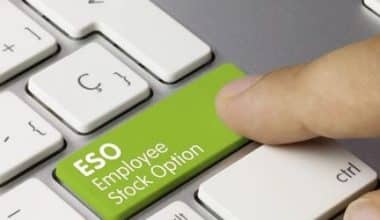The purchase order is the backbone of business for both sellers and purchasers. These documents are legally binding and indicate the customer’s intent to purchase and act as a record of the order details. Everyone engaged in their creation and transfer must keep a close eye on these files. So, what are some good methods for keeping tabs on, stowing away, and keeping your purchase orders in order? A purchase order number is the first step in being able to do any of those things. Read on to know what a PO number is on an invoice and what a PO number generator is. We also added the differences between a PO number vs invoice number.
Let’s dive in!
What Is a Purchase Order?
The goods and services that a buyer wishes to acquire are detailed in a purchase order (PO), which is a document sent by the customer to the vendor. If the vendor accepts the purchase order, it becomes a binding contract.
A properly documented purchase order includes elements such as:
- Date of the order
- The description of the goods or services
- Quantity of the goods or services
- Payment terms
- Buyer and seller contact information
- Unique PO number
How Do They Work?
A Purchase Order (PO) is a document issued by the product or service purchaser at the outset of a transaction. Included are the goods or services being exchanged, their amount, and their agreed-upon price. A well-executed purchase order should be detailed enough so the seller has no questions. The purchase order is binding on both parties because it has been authorized by them. The purchase order number, located at the top of the form, will be used in all subsequent communications with the customer, including phone calls, shipping documents, and invoicing.
After the vendor fulfills the purchase order, they will send an invoice. The invoice is the final bill. The quantity and pricing of the goods and services supplied by the vendor will be listed. The purchase order number will also be included to indicate that this sale was authorized in advance. The buyer is obligated to make payment in accordance with the terms originally agreed upon upon receipt (the seller, for instance, may stipulate that all of its suppliers be paid within 30 days).
What Is a Po Number?
A PO number is a special number that is assigned to a purchase order, which is a formal declaration of a customer’s intention to acquire something from a seller and covers the specifics of the transaction. Both the seller and the customer will benefit from having a unique identifier for each order placed or received. Buyers confirm their intent to purchase goods or services by issuing purchase orders to sellers. Prices and quantity requirements are among the details included in the document. Acceptance of a purchase order by a supplier constitutes almost full acceptance of the terms and conditions included therein.
It’s crucial for companies to keep an eye on their purchasing orders. Those records are quite important from a legal standpoint. Furthermore, they aid businesses in keeping accurate financial records and are often crucial to the smooth running of a business, especially smaller ones.
This is when PO numbers come into play. They facilitate the storage and retrieval of purchase orders by both parties, facilitating the accountability of sellers and purchasers with respect to order specifics and facilitating the auditing and accounting processes.
How to Get a Po Number
Establishing a purchase order number can be done in a few different ways. It’s possible that certain companies, especially those with fewer resources, may be able to make their own purchase order templates and issue PO numbers to orders and bills one by one.
However, larger companies may have to deal with a substantially higher volume of transactions, making the time-consuming and inefficient process of manually entering purchase order numbers untenable.
Because of this, many online bookkeeping services can produce purchase order details automatically, such as P.O. numbers for each item. There are two main approaches you can choose from when creating a PO numbering system: manual and automatic.
Manual PO Number System
You may have the freedom to generate your own PO number system manually if you manage a small business with a low volume of purchase orders. The code can consist of letters, numbers, and dashes in any order that makes sense to you as the company’s leader. On the other hand, if you need a more substantial PO number, you may have the system generate it based on the order’s creation date. No matter what path you take, you should always make a note of the vendor’s name, the essential order data, and the validity date in a different place. Keep doing this even when given instructions.
Keep track of your customers, orders, and payments in one central location by recording pertinent information about each purchase order in an Excel spreadsheet.
Automatic PO Number Generator
Managing purchase orders and company expenses becomes increasingly complicated as corporate spending rises. Eventually, it becomes inefficient and time-consuming to give each order a unique code by hand. Fortunately, numerous low-cost cloud-based accounting solutions exist today, each of which comes equipped with its own automated Purchase Order (PO) number generation and assignment capability.
Po Number Generator
The term “PO number generator” does not cover a wide range of options, especially when it comes to resources that can be purchased. If you use a cloud-based accounting solution or an enterprise resource planning (ERP) system to manage your finances, you’ll have no issue coming up with buy order numbers to include in your invoices and purchase orders.
You can use a random PO number generator or a random number generation technique to generate purchase order numbers if you make them manually or in an application like Excel and you don’t need them to be sequential or a certain length.
To that end, it’s usually a good idea to use specialized accounting or enterprise resource planning software to create buy orders and, by extension, purchase order numbers. A system like that can save you a lot of time and work, so it’s probably worth the investment unless your sales volume is extremely low.
Where to Put the PO Number on an Invoice
The most common practice is to include a purchase order number at the top of an invoice so that it may be promptly and readily referenced. Where you put the purchase order number on your template depends on the type of business you run.
Po Number vs Invoice Number
A PO number vs invoice number both appear similar at first glance. There are several distinctions between a PO number vs invoice number despite the fact that they contain identical information and payment terms. The following are the differences between a PO number vs invoice number:
#1. The Document’s Issuing Authority
Invoicing occurs after a consumer issues a purchase order to a vendor.
#2. Legal Status
While they are useful for tracking shipments and demanding payment, invoices have no other legal purpose in the buying process. Unless used to back up the purchase order, it cannot be utilized as a financial instrument or in civil court because it is not an agreement between the buyer and seller.
#3. How They’re Used
The purpose of an invoice is to put the onus back on the buyer to pay by the due date. When the due date approaches and the seller still hasn’t been paid for the cargo, they may send a reminder email. The invoice might also serve as a friendly payment reminder from the seller. In contrast, a purchase order allows the buyer to specify the amount and delivery date of the product they need from the supplier.
#4. What They Specify
Invoices detailing the contents of shipments are standard practice. Multiple invoices with unique serial numbers are generated whenever the vendor sends more than one package.
Here are further differences between a PO number and an invoice number
| PO Number | Invoice Number |
| Order confirmation sent by the buyer to the vendor | Payment reminder sent by the supplier to the buyer |
| Generated when the buyer places an order | Generated after the order is fulfilled |
| Defines the terms of a purchase | Defines the confirmation of a sale |
| Prevents overstocking of inventory | Prevents duplicate and overpayments |
| Makes it easy to track inventory | Helps compute spend and taxes |
Similarities between Purchase Order and Invoice
It’s easy to become confused between purchase orders and invoices because they sound similar. Both involve the exchange of information on a product or service for commercial purposes. However, the timing of these events is distinct. They share many similarities, but there are also important distinctions that must be made.
In most cases, a purchase order and an invoice can be used interchangeably. There are a few key parallels between purchase orders and invoices, despite their many distinctions:
- Both are forms of advertising relating to product purchasing.
- They’re crucial to reducing wasteful expenditures.
- They allow for greater transparency in the buying procedure.
- Basic order, delivery, vendor, and pricing details are included in both.
- Both Purchase Agreements are Binding Legal Documents
What Function Do Invoice and a Purchase Order Serve in a Business?
Even though it may seem like extra work, purchase orders, and invoices are essential financial papers that assist a company stay on top of its purchasing needs as demand grows and the buyer-seller relationship develops.
You can’t choose between a purchase order and an invoice because they’re both crucial. Despite the fact that legally speaking, invoices are essential, purchase orders offer much-needed clarification and help avoid problems.
Using buy orders and invoices will minimize misunderstandings by clearly outlining the expected outcomes of the transaction, regardless of fluctuations in demand or the degree of complexity in the underlying purchasing process.
Why Take Purchase Order and Invoice Management Digital
Manual purchase order and invoice management are simple in the beginning when a company is small and the quantity of purchases is modest. However, as the business expands, so does the quantity of purchases it makes. Understanding the similarities and variations between purchase orders and invoices won’t help much either.
It’s becoming increasingly tedious and error-prone for firms to manually process the increasing number of purchase orders and invoices they get via email, fax, postal mail, etc. Even if it seems like a minor piece of information, it’s crucial to the success of the process as a whole.
Electronic data interchange (EDI) systems can be expensive, and some companies simply cannot afford to implement such a system with their vendors. Procurement solutions allow businesses to protect the information included in invoices for purchase orders. To streamline and improve the effectiveness of their most fundamental procurement procedures, companies of all sizes can use this software to manage things like purchase orders and invoices.
Why is the PO Number Important?
Whether you’re the buyer or the seller, the purchase order is an integral aspect of the business transaction that requires your attention and adherence at all times.
Giving each purchase order a distinct PO number facilitates easier, more precise order tracking. If a client has a problem with a purchase that was made months ago, the purchase order and associated invoice can be located with a simple search using the PO number.
The same benefit is available if your company places the order and issues the PO number. An easy-to-generate code and quick-to-find and check-for purchases are both benefits of using a PO numbering scheme. Duplicate payments, improper filing, and other accounting mistakes are avoided when a PO number is used.
The long-term success of your company depends on providing services that are both legitimate and provided by trained professionals. Delivering the wrong item or incorrectly billing a customer can have devastating effects on a company’s good name and bottom line.
Here are more reasons why a PO number is important:
#1. Trust and Verification
Even as mutual confidence develops between a buyer and seller, each transaction still requires guarantees of payment and delivery. A purchase order reduces the likelihood of confusion and makes all parties accountable. As businesses evolve, the underlying assumptions upon which they were founded may shift. The consistency of this knowledge is facilitated through purchase orders.
#2. Organization
Expanding a company’s customer base increases the difficulty of fulfilling orders. In a large organization, it’s not as simple as writing down the instructions and handing them to an employee to carry out. Having all of your customers use a purchase order system that you can monitor can keep them happy and bring you additional business.
#3. Accountability
A buy order can simplify a company’s purchasing and sales processes. By formalizing the conditions of the deal in writing, both the seller and the buyer are more likely to follow through on the commitments they’ve made. In addition, it facilitates the seller’s tracking of the items’ sales progress and reconciliation of unfulfilled orders. The use of purchase orders benefits both parties.
Who Provides a PO Number?
Each purchase order is given a special identifier known as a “PO number.” It is the responsibility of the buyer to create this document, which will be used by both parties throughout the sale process. Sellers will often include the PO number on the sales invoice to verify that they are charging the proper customer for the right purchase.
How Do I Use a PO Number?
For each purchase order, an individual P.O. (Purchase Order) number is generated. The purchase order specifies the goods and services a company would like to acquire from a given vendor. Both the buyer and the seller will be referring back to the P.O. number as the deal progresses.
How Do I Find My PO Number?
The purchase order number is a legally binding number located on the purchase order document. A buy order is an initial business document that specifies the goods or services to be given, together with their quantities and prices.
How Many Digits Is a PO Number?
A PO number will include between four and six digits. The PO number can have any combination of letters, digits, and dashes.
What Is the Difference Between a PO Number and an Order Number?
A purchase order’s PO number (or order number) is a special identification identifier generated by the purchasing company. The company’s management can create the code by hand, or the program could do it automatically.
Final Thoughts
The purchaser will often assign a special identification number known as a PO number to each purchase order. The management of the company or the company’s accounting software might manually or automatically generate the code. As the transaction progresses, the PO number will be referenced on client phone calls, shipping forms, and occasionally the corresponding sales invoice to guarantee accuracy.
Related Articles
- Purchase Order Process: Types, Examples & Format
- 11+ BEST PURCHASE ORDER SYSTEM FOR SMALL BUSINESS 2023
- WHAT IS PURCHASE PRICE ALLOCATION: All You Need To Know






